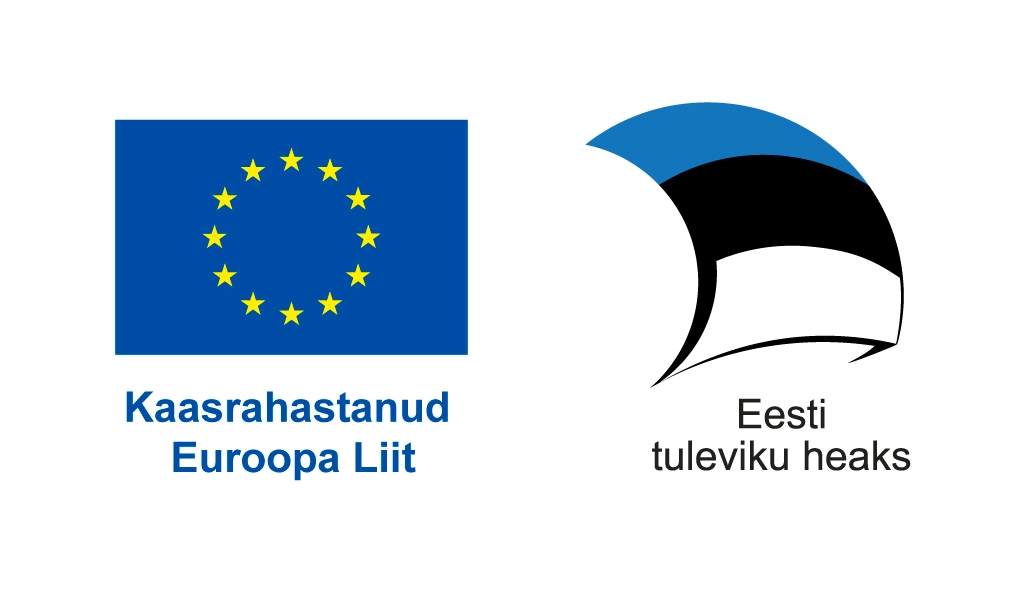The Lyfery health behavior model helps us more accurately assess a client’s lifestyle to offer the most personalized life insurance pricing. Today, we dive deeper into the components of the Lyfery health behavior model. We start with smoking and, toward the end, also discuss e-cigarettes and their impact on young people.
In 2022, one in six people in Estonia was a daily tobacco smoker, with 70.4% smoking 10–20 cigarettes per day. About 49% of smokers expressed a desire to quit (1).
Smoking is one of the leading causes of premature death in Europe, accounting for approximately 780,000 deaths in 2019 (2). Thus, smoking plays an important role in assessing insurance risk.
Global studies have shown that smoking is the most significant lifestyle-related risk factor for cancer (3). For instance, in Europe, smoking causes over 80% of lung cancers, which is one of the leading causes of cancer deaths in Estonia (2,4). Tobacco also harms almost every other part of the body. Smoking damages blood vessels in the heart, brain, other organs, and limbs, increasing the risk of heart attack, stroke, organ failure, and limb loss. It also impairs fertility and pregnancy and causes premature aging of the skin (5).
People often smoke to cope with stress and may fear quitting. However, studies show the opposite: quitting smoking likely benefits mental health. Stopping smoking is associated with reduced depression, anxiety, and stress, as well as improved psychological quality of life (6). Mental health improved most in those who had a mental or physical illness before quitting (7). It has also been found that the longer someone has lived tobacco-free, the higher their psychological health score (6).
A smoker can also endanger their loved ones. Secondhand smoke increases the risk of lung cancer, stroke, and heart disease by 20–30%. Exposure to tobacco smoke during pregnancy increases the risk of having a low-birth-weight baby and other complications. Babies exposed to tobacco smoke have a higher risk of sudden infant death syndrome (SIDS). Older children exposed to secondhand smoke experience more respiratory infections, ear infections, and severe asthma (8). Therefore, it’s essential to arrange one’s life to protect loved ones from exposure to smoke.
At Lyfery, we currently do not consider clients’ e-cigarette use because e-cigarettes have been studied less than traditional cigarettes. As a result, we cannot fully predict the risks associated with long-term use or starting at a young age. We could say that today’s e-cigarette users are part of an experiment from which future generations can learn.
We know that e-cigarette aerosol generally contains fewer harmful substances than cigarette smoke. Therefore, cigarettes are known to be more dangerous than e-cigarettes, but e-cigarettes should not be considered safe. E-cigarette vapor can still contain harmful substances (e.g., carbonyl compounds and volatile organic compounds or VOCs) (9).
Attention should be drawn to the extremely high nicotine content often found in e-cigarettes. A typical disposable e-cigarette can contain 40 mg of nicotine, equivalent to the amount of nicotine in 40 cigarettes or two packs. Nicotine is highly addictive and toxic in large quantities (10).
E-cigarettes are a growing trend among young people and minors. Regular nicotine use at this stage of life can harm young brain development and cause strong addiction. Young people generally do not use e-cigarettes to quit smoking but rather for flavor, curiosity, and perceived safety. Thus, e-cigarettes are creating a new generation at risk of lifelong nicotine addiction (9).
A 2022 study in Estonia, involving 720 students aged 11–19, found that nearly one in five used e-cigarettes monthly or more frequently. About 6% (46 students) were daily users, with a quarter consuming 6–10 ml daily (equivalent to 6–10 packs of cigarettes). Nine students used over 10 ml per day, which equates to up to 10 packs per day. For 166 students, their first tobacco/nicotine experience was between the ages of 12 and 15, while 20% (49 students) had tried it at age 11 or younger. About 20% of students had tried cigarettes, and 30% had tried e-cigarettes (10).
Many scientifically backed products and services are available to help people quit tobacco and nicotine. Just as one would use equipment and a guide to climb Mount Everest, it’s wise to take advantage of these resources for quitting nicotine.
The Tobacco Information website offers comprehensive insights and practical advice to make quitting smoking a little easier.
Studies also show that individual counseling can increase the likelihood of quitting by 57%. We strongly encourage trying this counseling service. Thanks to the Health Insurance Fund, this service is currently free, even for those without health insurance. Find the closest option here.
Both nicotine replacement therapy (e.g., nicotine patches) and prescription medications (e.g., bupropion) can increase the likelihood of quitting by up to 60% (11). It’s wise to consult a family doctor, pharmacist, or individual counselor.
We hope our article was helpful to you. If you think a loved one might also benefit from this topic, we would greatly appreciate it if you shared this article with them.
R. Reile, T. Veideman. Eesti täiskasvanud rahvastiku tervisekäitumise uuring 2022. Tervise Arengu Instituut. Link: https://tai.ee/sites/default/files/2023-04/Taiskasvanud_rahvastiku_tervisekaitumise_uuring_2022.pdf
OECD/Euroopa Liit. Health at a Glance: Europe 2022: State of Health in the EU Cycle. 2022. OECD Publishing, Paris. Link: https://www.oecd-ilibrary.org/social-issues-migration-health/health-at-a-glance-europe-2022_41bcc8db-en#:~:text=Tobacco%20use%20is%20a%20major,of%20lung%20cancer%20in%20Europe.
Tran K. B., et al.The global burden of cancer attributable to risk factors, 2010–19: a systematic analysis for the Global Burden of Disease Study 2019. The Lancet 400 (10352): 563 – 591. Link: https://www.thelancet.com/journals/lancet/article/PIIS0140-6736(22)01438-6/fulltext#articleInformation
Innos, K. Vähk Eestis – haigestumuse, suremuse ja elulemuse trendid. Põhja-Eesti Regionaalhaigla veebileht. Loetud 19.09.2024. Link: https://onkoloogiakeskus.ee/vahk-eestis-haigestumuse-suremuse-ja-elulemuse-trendid
American Cancer Society. Health Risks of Smoking Tobacco. 2020. Loetud 24.09.24. Link: https://www.cancer.org/cancer/risk-prevention/tobacco/health-risks-of-tobacco/health-risks-of-smoking-tobacco.html
Greenhalgh, E.M., et al. Tobacco in Australia: Facts and issues. Melbourne: Cancer Council Victoria. 2024. Loetud 23.09.2024. Link: https://www.tobaccoinaustralia.org.au/home.aspx
Taylor, G, et al. Change in mental health after smoking cessation: systematic review and meta-analysis. BMJ. 2014 Feb 13;348:g1151. Loetud 23.09.2024. Link: https://www.ncbi.nlm.nih.gov/pmc/articles/PMC3923980/
USA Haiguste Ennetamise ja Tõrje Keskus. Health Problems Caused by Secondhand Smoke. 2024. Loetud 23.09.2024. Link: https://www.cdc.gov/tobacco/secondhand-smoke/health.html
USA Tervishoiu- ja Teenindusministeerium. E-Cigarette Use Among Youth and Young Adults. A Report of the Surgeon General. 2016. Loetud 23.09.2024. Link: https://www.cdc.gov/tobacco/data_statistics/sgr/e-cigarettes/pdfs/2016_sgr_entire_report_508.pdf
Kivistik, K., et al. Tubaka- ja nikotiinitoodete tarvitamise uuring. Balti Uuringute Instituut. Tartu 2023. Link: https://www.ibs.ee/publikatsioonid/tubaka-ja-nikotiinitoodete-tarvitamise-uuring/
Barua R.S., et al. 2018 ACC Expert Consensus Decision Pathway on Tobacco Cessation Treatment: A Report of the American College of Cardiology Task Force on Clinical Expert Consensus Documents. 2018. J Am Coll Cardiol. 72(25):3332-3365. Link: https://pubmed.ncbi.nlm.nih.gov/30527452/

Lyfery pakub sulle personaalset ja sinu tervisekäitumisest sõltuvat elukindlustuse lahendust. Skandinaavia pangad seda endale lubada ei saa.

The project “Technological development, testing, and demonstration of components of a healthy lifestyle scoring model” has received €34,580 in development grant support.
As part of the project, a model was developed to assess healthy lifestyle habits, enabling the cost-effective offering of life insurance that supports healthier living. The goal is to create a scalable, health-promoting product that can be expanded across Europe.
As a result of the project, the Lyfery app now measures lifestyle-related mortality risk on an individual customer basis.